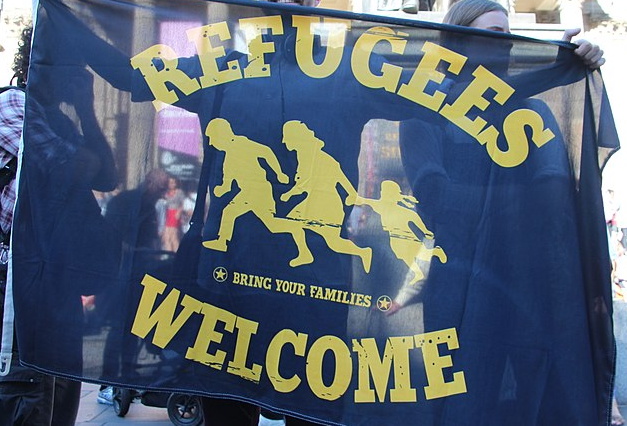In the United States in the 1980s, the simple act of providing refuge became a form of civil disobedience. Three decades later, in the era of Trump, providing sanctuary may again qualify as a radical stance.
Published in the April 2017 issue of the New Internationalist.
In the United States in the 1980s, the simple act of providing refuge became a form of civil disobedience.
With Washington supporting death-squad governments in Guatemala and El Salvador, a flood of refugees moved north, creating a humanitarian crisis. Immigrants crossing the border into the US from Mexico were perishing in the desert. Yet the Reagan administration refused to grant asylum to those facing persecution from the regimes it had backed in Central America.
Religious congregations resisted. As part of a broader solidarity movement, people of faith began harbouring refugee families in their churches and homes. The sanctuary movement was born.
As journalist Edwin Guthman later wrote in the New York Times, ‘Their efforts grew into a modern ‘underground railroad’. By the mid-1980s, more than a dozen activists had been prosecuted on charges of ‘transporting and harbouring illegal aliens’. Nevertheless, the movement rapidly spread, eventually encompassing some 400 churches nationwide. Sanctuary advocates also spearheaded legal efforts that ultimately allowed thousands of migrants to remain.
Three decades later, in the era of Trump, providing sanctuary may again qualify as a radical stance.
Today, the great majority of America’s 11 million undocumented immigrants are not recently arrived refugees fleeing war. Instead, they were displaced by poverty and corporate globalization; they came seeking a better life for their families. Many have lived here for decades, and they make vital contributions to the economy. Some young adults who were brought to the US as small children have never known another home.
Trump has focused his rhetoric on denouncing those with criminal records. But under current executive mandates, offences as minor as traffic violations or presenting an employer with a bogus social security number – unavoidable for many trying to enter the formal economy – are grounds for deportation.
In fact, in rightwing parlance, all who reside in the US without proper documentation are known simply as ‘Illegals’, a label that provides cover for racism and dehumanization.
Allying with America’s most extreme xenophobes, Trump has explicitly taken aim at immigrant-friendly cities. Since the 1980s, the religious principle of sanctuary has come to be associated with a broader set of public policies. These involve city and county governments asserting that their police should protect all residents and not serve as deportation forces. As of 2016, more than 400 municipalities had adopted some kind of sanctuary policy, attracting the ire of anti-immigrant crusaders.
Five days after taking office, Trump signed an executive order claiming that these localities ‘wilfully violate federal law… [and] have caused immeasurable harm to the American people and to the very fabric of our Republic’. The order vowed to refuse federal grant funding to any sanctuary city.
Standing up for sanctuary policies has thus become a test for local leaders. Some have showed considerable courage. Officials in San Francisco waited less than a week before suing the Trump administration, with City Attorney Dennis Herrera calling the order ‘not only unconstitutional but un-American’.
Immigrant rights advocates are not only pushing more elected officials to follow these examples, they are also broadening the call for sanctuary. Immediately after Trump’s election, the group Movimiento Cosecha organized students to demand that their schools become ‘Sanctuary Campuses’ and provide safe haven to undocumented students. On 16 November, just eight days after the election, students at more than 90 colleges and universities walked out of classes to highlight the issue.
Amid the groundswell, at least 28 schools have publicly taken pro-immigrant stands. Connecticut College president Katherine Bergeron said that the school ‘will use all available means to defend our undocumented students now and in the future’.
Cosecha organizer Thaís Marques added: ‘Millions of immigrants do crucial work that makes the American economy run, and we need the support of our country’s churches, community centres and homes as places of sanctuary against deportation too.’
Marques’ sentiment is exactly right: let a new sanctuary movement begin.
__________
Photo credit: Takver / Wikimedia Commons.
